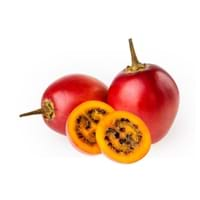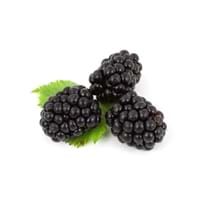Health Benefits
Cancer prevention, Improves eye vision, Prevents diabetes, Prevents high blood pressure
Cancer prevention, Heart care, Increases metabolic rate, Reduces stress, Treatment of dysentary, Treatment of skin Diseases
General Benefits
Cures inflamed tonsils, Helps in weight loss, Maintains healthy cholesterol level
Digestive aid, Maintains healthy cholesterol level, Strengthens bones
Skin Benefits
Anti-aging benefits, Protects skin from oxidative stress
Hydrates skin, Skin rejuvenation, Skin revitalization
Hair Benefits
Protects hair
Promotes longer and healthier hair
Allergy Symptoms
Anaphylaxis, Coughing, Diarrhea, Eczema, Hives, Itching sensation in throat, Nausea, Skin Rashes, Runny nose, Sneezing, Swelling of mouth, tongue or lips, Vomiting, Wheezing
Facial muscle tension, Pressure in sinus, Respiratory congestion, Runny nose, Sneezing, Tingling sensation in wrist and face
Side Effects
Heart burn
Nausea, Vomiting, Might cause change of urine color
Best Time to Eat
Along with meal, As a snack in the late afternoon, Don't consume at night and before bed, Don't eat after meal, Morning time (before lunch)
Best if taken as a breakfast (or empty stomach), As a snack in the late afternoon, Don't consume at night and before bed, Eat the fresh ones, avoid mixing with any other foods, don't eat after meal., Morning time (before lunch)
Vitamin B5 (Pantothenic Acid)
Vitamin C (Ascorbic Acid)
Vitamin K (Phyllochinone)
Phytosterol
Not Available
Calories in Fresh Fruit with Peel
Not Available
Calories in Fresh Fruit without Peel
Not Available
Calories in Frozen Form
Not Available
Calories in Pie
Not Available
Type
Fruit vegetable
Berry
Season
All seasons
Spring, Summer
Varieties
Tamarillo bold gold, Tamarillo red beau, Tamarillo tango and Tamarillo teds red
Prime Ark, Prime Jim, Illini Hardy, Kiowa, Shawnee, Apache, Arapaho, Chester, Hull, Natchez, Navaho and Triple Crown and Von
Color
Orange, Red, Yellow
Purplish black
Inside Color
Creamy Yellow
Magenta
Taste
Tangy, Tart
Juicy, Sweet
Origin
South Africa
Asia, Europe, North America, South America
Soil Type
Sandy loam, Well-drained
Well-drained
Climatic Conditions
Rainfall, Warm
Dry, Warm to hot climate
Facts about
- Up until 1967, tamarillos were referred to as tree tomatoes.
- The name tamarillo is derived from Maori word 'tama' which means leadership and rillo from spanish word 'amarillo' which means yellow.
- There are around 2000 varieties of blackberries throughout the world.
- 80-85 degrees is the ideal temperature for its production.
- Leaves of blackberry tree are used to treat sore throats and mild inflammation of the gums.
Top Producer
New Zealand
United States of America
Other Countries
Australia, Chile, Colombia, Malaysia, Peru, Philippines
China, New Zealand, Serbia, South Africa
Top Importer
United States of America
United States of America
Top Exporter
New Zealand
Mexico
Botanical Name
Solanum betaceum
Rubus Fruticosus
Synonym
tree tomato, genus Cyphomandra, Cyphomandra
Rubus Millspaughii or Rubus Laciniatus
Subkingdom
Tracheobionta
Tracheobionta
Division
Magnoliophyta
Magnoliophyta
Class
Magnoliopsida
Magnoliopsida
Subclass
Asteridae
Rosidae
Family
Solanaceae
Rosaceae
Species
Solanum betaceum
Rubus fruticosus
Generic Group
Nightshade
Rose
Difference Between Tamarillo and Blackberry
We might think that Tamarillo and Blackberry are similar with respect to nutritional value and health benefits. But the nutrient content of both fruits is different. Tamarillo and Blackberry Facts such as their taste, shape, color, and size are also distinct. The difference between Tamarillo and Blackberry is explained here.
The amount of calories in 100 gm of fresh Tamarillo and Blackberry with peel is Not Available and 43.00 kcal and the amount of calories without peel is 31.00 kcal and Not Available respectively. Thus, Tamarillo and Blackberry belong to and category.These fruits might or might not differ with respect to their scientific classification. The order of Tamarillo and Blackberry is Solanales and Rosales respectively. Tamarillo belongs to Solanaceae family and Blackberry belongs to Rosaceae family. Tamarillo belongs to Solanum genus of Solanum betaceum species and Blackberry belongs to Rubus genus of Rubus fruticosus species. Beings plants, both fruits belong to Plantae Kingdom.









